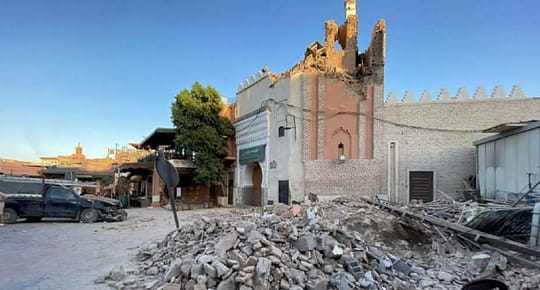Traveling to Morocco: Post-Earthquake Realities and Experiences

The earthquake that struck Morocco on September 8th, 2023 had immense and multifaceted impacts on the country. The 6.8 magnitude disaster caused widespread devastation, affecting regions in and around the High Atlas Mountains and the bustling city of Marrakech. The earthquake resulted in a significant loss of life, vast damage to the infrastructure, and several disruptions to daily activities. The disaster came just as Morocco’s tourism industry was recovering from the pandemic, and shortly before the winter season. As Morocco navigates the aftermath of this earthquake, the tourism sector – a critical aspect of its economy – remains resilient, bouncing back through a combination of community efforts and innovative approaches by its government.
Marrakech, a major tourist hub, suffered notable damage. The historical quarter, including a historical small mosque inside the heart of the Medina, faced substantial destruction. Zoned Hamiti, a resident of Marrakech, shared her experience with CNN, recalling the fear and chaos as people took the streets for safety, illuminating the deep emotional trauma experienced by the community. Despite the devastation, Marrakech, a major tourist attraction, showcased remarkable resilience. Global solidarity was present, with international organizations like Global Giving, UNICEF, and Project Hope, and aid from Spain and the United States provided crucial support. Efforts focused on delivering vital aid, such as food, shelter, and healthcare to affected families.
More importantly, tourism promoters within Marrakech worked vigorously to ensure that travelers visiting the area were safe. This included engaging in zealous marketing campaigns to rebuild its image as a safe and attractive tourist destination. The city also focused on repairing and upgrading tourist infrastructure, including restaurants, riads, and historical sites that were primarily affected by the earthquake. This also ensured that the city was still capable of offering quality services and experiences to tourists in the wake of a disaster. Because of their resilience, researchers reported that there was a 7% increase in international visitors in September 2023, compared to the same period last year.
Tourism is not only a critical economic driver for Morocco but also a key component in its recovery efforts. Marrakech, known for its lively souks and rich cultural heritage, remains a focal point for travelers. The city’s ability to quickly restore and improve its infrastructure has been significant in maintaining its place as a premier destination for travel-goers. In the wake of the earthquake, the Moroccan government and local businesses intensified their efforts to attract tourists. This included emphasizing the unique cultural experiences still available, and the opportunity to support local communities through tourism.
Hotels, riads, and tour operators adapted by offering special packages and experiences that align with the recovery efforts. Following the aftermath of the earthquakes, Morocco has introduced unique tourism experiences that have allowed visitors to contribute to the recovery efforts directly. Volunteer tourism, where visitors can participate in rebuilding projects and community support, has gained popularity. These experiences provide tourists with a sense of fulfillment and a deeper connection to the places they visit.
While Marrakech received considerable attention during the recovery process, the surrounding villages in the Atlas Mountains, like Amizmiz, also faced irreparable damage. Over 100 people died and citizens were seen digging with their hands to rescue buried possessions and people, as reported by BBC News. These villages, often overshadowed by Marrakech’s fame, are vital to the region's tourism narrative.
The High Atlas Foundation (HAF), has been actively engaged in these communities. Their involvement in Amizmiz and surrounding areas highlight the importance of sustainable development and community support in the recovery process. Katouar Ait Lahaj, a project manager at HAF, has organized over 709 international visits, providing unique insights into why tourists come and their feedback. Visitors are drawn to the rich cultural heritage and the resilience of these communities, adding a layer of depth to their travel experiences.
Through these interactions, visitors gain insights into the challenges and successes of these communities in Amiziz. Under Katouar’s leadership, these exchanges ensure that they contribute meaningfully to the sustainable development goals of the region. By illuminating the significance of community support and sustainable practices, HAF and its team continue to play a vital role in the growth of Amiziz and surrounding areas, leaving a long-lasting impact on both locals and tourists alike. Thus, this blend of cultural immersion and community engagement facilitated by HAF offers tourists a more profound and meaningful travel experience.
Through swift community efforts and innovative strategies, Marrakech and its surrounding villages, like Amizmiz, have restored confidence in their tourism industry. Visiting Morocco can significantly support disaster relief efforts, as many locals depend on tourism revenue for their livelihoods. By acknowledging the significance of these resilient communities and supporting their recovery, travelers can contribute to a more robust and inclusive tourism experience in Morocco.
Aaliyah Taylor is a student at the University of Virginia and an intern at the High Atlas Foundation in Morocco.